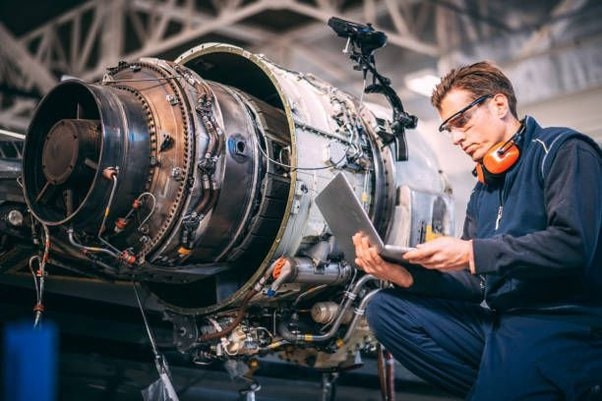The aerospace industry is a multidisciplinary sector that demands the expertise of professionals from various engineering backgrounds. Among them, mechanical engineers play a crucial role, contributing to the design, development, manufacturing, and maintenance of aircraft, spacecraft, and associated systems. Their responsibilities cover a wide range of activities, ensuring that aerospace systems are safe, reliable, and efficient. In this article, we explore the significant contributions of mechanical engineers in the aerospace industry.
Key Responsibilities of Mechanical Engineers in Aerospace
1. Structural Design and Analysis
Mechanical engineers are responsible for designing aircraft and spacecraft structures that can withstand aerodynamic loads, extreme temperatures, and pressure variations. They ensure that materials used are lightweight yet strong enough to meet safety requirements. Techniques such as Finite Element Analysis (FEA) are employed to simulate and predict structural behavior under various conditions.
2. Thermal Management Systems
Aerospace systems encounter extreme temperature changes. Mechanical engineers develop thermal management systems to control and dissipate heat. This ensures that electronic components and propulsion systems operate efficiently, preventing overheating during space missions or flight operations.
3. Propulsion Systems Development
Mechanical engineers contribute to the design and testing of jet engines, rocket engines, and other propulsion systems. Their knowledge of thermodynamics and fluid mechanics plays a critical role in ensuring that engines are powerful, fuel-efficient, and reliable during long missions.
4. Aerodynamics and Fluid Dynamics
Aircraft and spacecraft must move efficiently through air or space. Mechanical engineers perform aerodynamic simulations to optimize the shape and design of wings, fuselage, and other components. This minimizes drag, improves stability, and enhances fuel efficiency.
5. Material Science and Selection
Choosing the right materials is essential to aerospace projects. Mechanical engineers work closely with material scientists to select composite materials, alloys, and ceramics that are both lightweight and strong, helping reduce overall weight without compromising safety.
6. Manufacturing and Quality Control
Mechanical engineers oversee the manufacturing process to ensure that components meet strict aerospace standards. They are involved in the production of precision parts, assembly, and testing of aircraft and spacecraft. Quality control is essential to ensure that every part functions flawlessly under real-world conditions.
7. Control and Actuation Systems
Mechanical engineers design actuation systems that control aircraft surfaces like flaps, rudders, and landing gear. These systems are vital for stability, maneuverability, and safety during flight. They also develop control mechanisms used in satellites and space probes for precise navigation.
Mechanical Engineers in Space Exploration
In space exploration, the role of mechanical engineers becomes even more critical. They contribute to the design of spacecraft, rovers, and space habitats, ensuring that these systems are functional in the harsh environment of space. Mechanical engineers also work on:
- Life support systems for astronauts in spacecraft and space stations
- Rovers and autonomous vehicles for planetary exploration
- Spacecraft launch mechanisms and docking systems
- Heat shields and re-entry systems for returning spacecraft
Key Tools and Technologies Used
Mechanical engineers in the aerospace sector use various tools and technologies to design and develop aerospace systems:
- CAD Software (e.g., CATIA, SolidWorks) for creating 3D models of aircraft and spacecraft
- Finite Element Analysis (FEA) for stress and structural analysis
- Computational Fluid Dynamics (CFD) for simulating aerodynamic properties
- Wind Tunnels for physical testing of aircraft models
- Additive Manufacturing (3D Printing) for producing prototypes and components
Challenges Faced by Mechanical Engineers in Aerospace
Mechanical engineers in the aerospace industry face several challenges, such as:
- Stringent safety requirements and certifications from aviation authorities like the FAA and EASA.
- Weight limitations, requiring innovative designs to meet performance criteria.
- Extreme environmental conditions in space, such as high radiation and vacuum.
- Integration of new technologies such as artificial intelligence and automation in aircraft.
- Cost constraints, which require balancing budget and performance in large projects.
Emerging Trends in Aerospace for Mechanical Engineers
- Electric Aircraft: Engineers are developing electric propulsion systems to reduce emissions in aviation.
- Autonomous Drones: The rise of UAVs (Unmanned Aerial Vehicles) offers new challenges and opportunities.
- Space Tourism: Engineers are involved in designing reusable spacecraft for commercial space travel.
- Advanced Composites: New materials are emerging to enhance the performance and durability of aerospace components.
- Artificial Intelligence and IoT: Smart sensors and AI are being integrated to predict failures and optimize performance.
Conclusion
The mechanical engineering field plays a vital role in the aerospace industry by ensuring the design, safety, and efficiency of aircraft, spacecraft, and propulsion systems. From structural analysis to propulsion, thermal management, and control systems, mechanical engineers are involved in every stage of the product lifecycle. As technology evolves, the role of mechanical engineers will continue to expand, shaping the future of aerospace innovations and exploration. With new challenges, such as the rise of electric aircraft and space tourism, mechanical engineers remain at the forefront of this ever-evolving industry.


